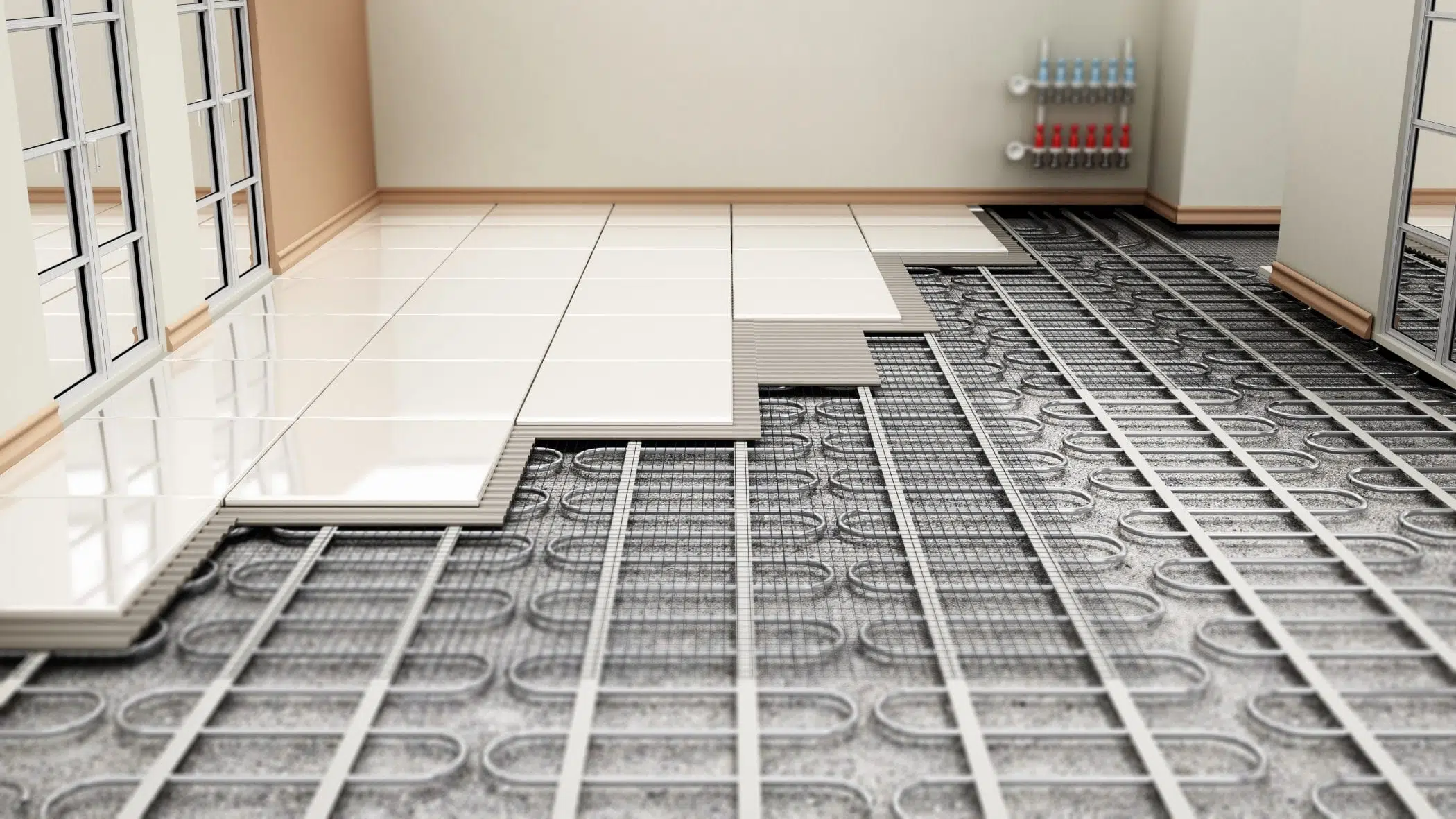
August 17, 2023
Underfloor heating, powered by hydronic heating, has gained popularity as an energy-efficient and comfortable heating solution for homes and businesses. This innovative method of heating offers a range of benefits, including improved energy efficiency and significant cost savings.
What are the energy-saving advantages of underfloor heating and how does it contribute to reducing your heating expenses? Let’s explore.
Traditional heating systems, such as radiators or forced-air systems, often lead to uneven heat distribution within a room. These systems rely on convection, where warm air rises and cold air sinks, resulting in temperature variations across different parts of the room.
In contrast, underfloor heating operates on the principle of radiant heat transfer. This means that the entire floor surface radiates heat evenly across the room, creating a consistent and comfortable warmth from the ground up.
Radiant heat transfer also allows you to set the thermostat at a lower temperature while still maintaining the desired comfort level. This is because the warm floors directly transfer heat to people and objects in the room, ensuring that they feel warm even with slightly lower air temperatures.
As a result, you consume less energy to achieve the same level of comfort, leading to reduced heating costs.
One of the primary advantages of underfloor heating is its ability to minimise heat loss, which is a common issue with conventional heating methods.
Traditional systems often experience heat loss through walls, ceilings and windows, especially in poorly insulated spaces. Underfloor heating addresses this challenge by emitting heat directly from the floor surface, eliminating the need to heat the air and relying on convection to warm the room.
With underfloor heating, heat loss through walls and ceilings is significantly reduced. This results in a more energy-efficient heating process, as a larger portion of the heat generated is effectively utilised to warm the space.
Additionally, underfloor heating can be zoned, allowing you to heat specific areas only when needed. This zoning capability further enhances energy efficiency by avoiding unnecessary heating of unoccupied spaces.
Underfloor heating systems operate at lower water temperatures compared to traditional radiators or forced-air systems.
Conventional systems often require higher water temperatures to compensate for heat loss during distribution. In contrast, underfloor heating can efficiently warm a room using lower water temperatures, thanks to its ability to radiate heat directly into the space.
Lower operating temperatures not only reduce energy consumption but also contribute to the longevity of the heating system. Components such as the boiler experience less strain when running at lower temperatures, resulting in reduced wear and tear. This extends the lifespan of the system and decreases the need for frequent repairs or replacements.
Underfloor heating powered by hydronic heating systems offers remarkable environmental and economic benefits. By embracing underfloor heating, you not only create a comfortable and cozy environment but also make a positive impact on your energy bills and the environment.
Visit Norwest Gas to explore all our heating solutions or call on 1300 499 169 for enquiries.
Recent Posts
Professional pool maintenance services at Norwest Gas
Pools are a massive investment to elevate the comfort of your home. With the change of seasons in a year, efficient pool h...
The advantages of underfloor heating with a hydronic heating system
Heating systems are crucial for each home to maintain comfort and even temperatures amidst Sydney’s fluctuating weather ...
How Gas Pool Heating Works
As the winter season approaches in Sydney, pool owners often face the dilemma of keeping their pools warm and inviting des...
Installation and Maintenance of Outdoor Heaters
As the winter season approaches in Sydney, it’s essential to ensure that your outdoor heaters are properly installed...
How to Choose the Right Outdoor Heater
Selecting the perfect outdoor heater for your commercial space in Sydney requires careful consideration of various factors...